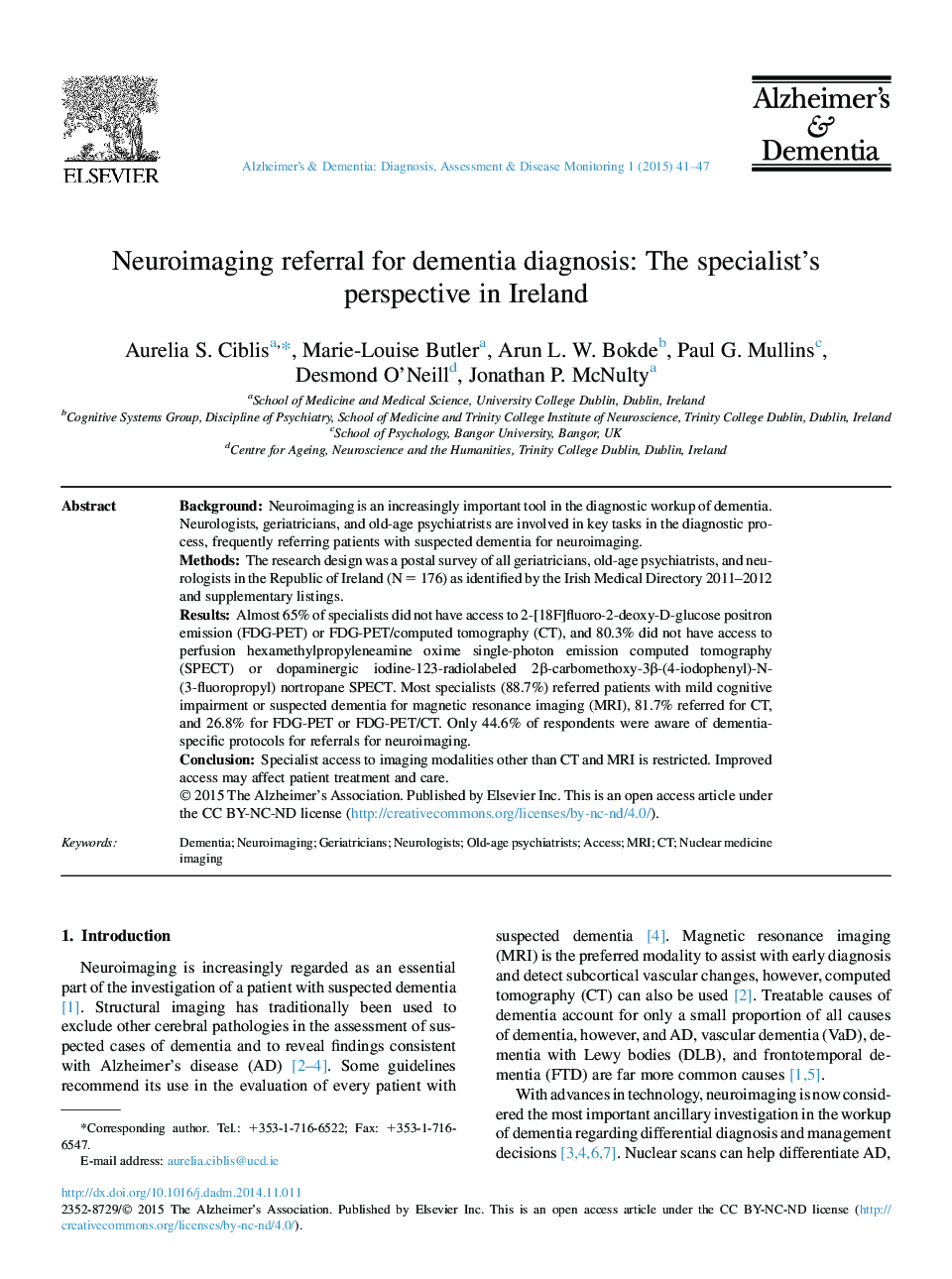| Article ID | Journal | Published Year | Pages | File Type |
|---|---|---|---|---|
| 3032048 | Alzheimer's & Dementia: Diagnosis, Assessment & Disease Monitoring | 2015 | 7 Pages |
BackgroundNeuroimaging is an increasingly important tool in the diagnostic workup of dementia. Neurologists, geriatricians, and old-age psychiatrists are involved in key tasks in the diagnostic process, frequently referring patients with suspected dementia for neuroimaging.MethodsThe research design was a postal survey of all geriatricians, old-age psychiatrists, and neurologists in the Republic of Ireland (N = 176) as identified by the Irish Medical Directory 2011–2012 and supplementary listings.ResultsAlmost 65% of specialists did not have access to 2-[18F]fluoro-2-deoxy-D-glucose positron emission (FDG-PET) or FDG-PET/computed tomography (CT), and 80.3% did not have access to perfusion hexamethylpropyleneamine oxime single-photon emission computed tomography (SPECT) or dopaminergic iodine-123-radiolabeled 2β-carbomethoxy-3β-(4-iodophenyl)-N-(3-fluoropropyl) nortropane SPECT. Most specialists (88.7%) referred patients with mild cognitive impairment or suspected dementia for magnetic resonance imaging (MRI), 81.7% referred for CT, and 26.8% for FDG-PET or FDG-PET/CT. Only 44.6% of respondents were aware of dementia-specific protocols for referrals for neuroimaging.ConclusionSpecialist access to imaging modalities other than CT and MRI is restricted. Improved access may affect patient treatment and care.
